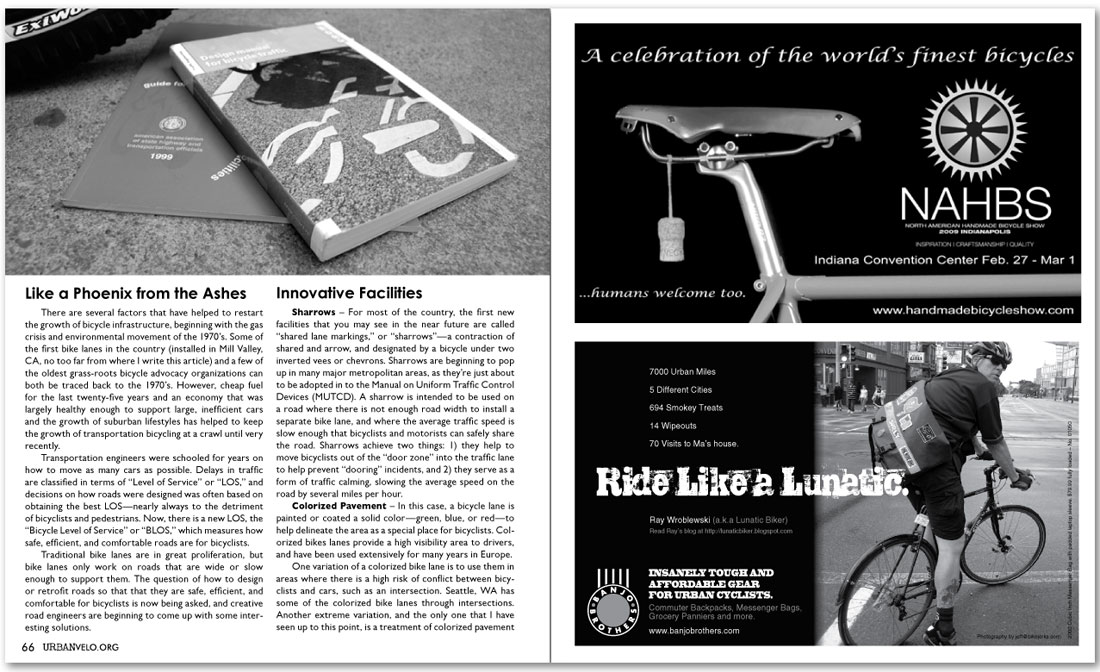| Facilitated Growth... Continued
Like a Phoenix from the Ashes
There are several factors that have helped to restart the growth of bicycle infrastructure, beginning with the gas crisis and environmental movement of the 1970’s. Some of the first bike lanes in the country (installed in Mill Valley, CA, no too far from where I write this article) and a few of the oldest grass-roots bicycle advocacy organizations can both be traced back to the 1970’s. However, cheap fuel for the last twenty-five years and an economy that was largely healthy enough to support large, inefficient cars and the growth of suburban lifestyles has helped to keep the growth of transportation bicycling at a crawl until very recently.
Transportation engineers were schooled for years on how to move as many cars as possible. Delays in traffic are classified in terms of “Level of Service” or “LOS,” and decisions on how roads were designed was often based on obtaining the best LOS—nearly always to the detriment of bicyclists and pedestrians. Now, there is a new LOS, the “Bicycle Level of Service” or “BLOS,” which measures how safe, efficient, and comfortable roads are for bicyclists.
Traditional bike lanes are in great proliferation, but bike lanes only work on roads that are wide or slow enough to support them. The question of how to design or retrofit roads so that that they are safe, efficient, and comfortable for bicyclists is now being asked, and creative road engineers are beginning to come up with some interesting solutions.
Innovative Facilities
Sharrows – For most of the country, the first new facilities that you may see in the near future are called “shared lane markings,” or “sharrows”—a contraction of shared and arrow, and designated by a bicycle under two inverted vees or chevrons. Sharrows are beginning to pop up in many major metropolitan areas, as they’re just about to be adopted in to the Manual on Uniform Traffic Control Devices (MUTCD). A sharrow is intended to be used on a road where there is not enough road width to install a separate bike lane, and where the average traffic speed is slow enough that bicyclists and motorists can safely share the road. Sharrows achieve two things: 1) they help to move bicyclists out of the “door zone” into the traffic lane to help prevent “dooring” incidents, and 2) they serve as a form of traffic calming, slowing the average speed on the road by several miles per hour.
Colorized Pavement – In this case, a bicycle lane is painted or coated a solid color—green, blue, or red—to help delineate the area as a special place for bicyclists. Colorized bikes lanes provide a high visibility area to drivers, and have been used extensively for many years in Europe.
One variation of a colorized bike lane is to use them in areas where there is a high risk of conflict between bicyclists and cars, such as an intersection. Seattle, WA has some of the colorized bike lanes through intersections. Another extreme variation, and the only one that I have seen up to this point, is a treatment of colorized pavement
|
|
|
|
|
|

